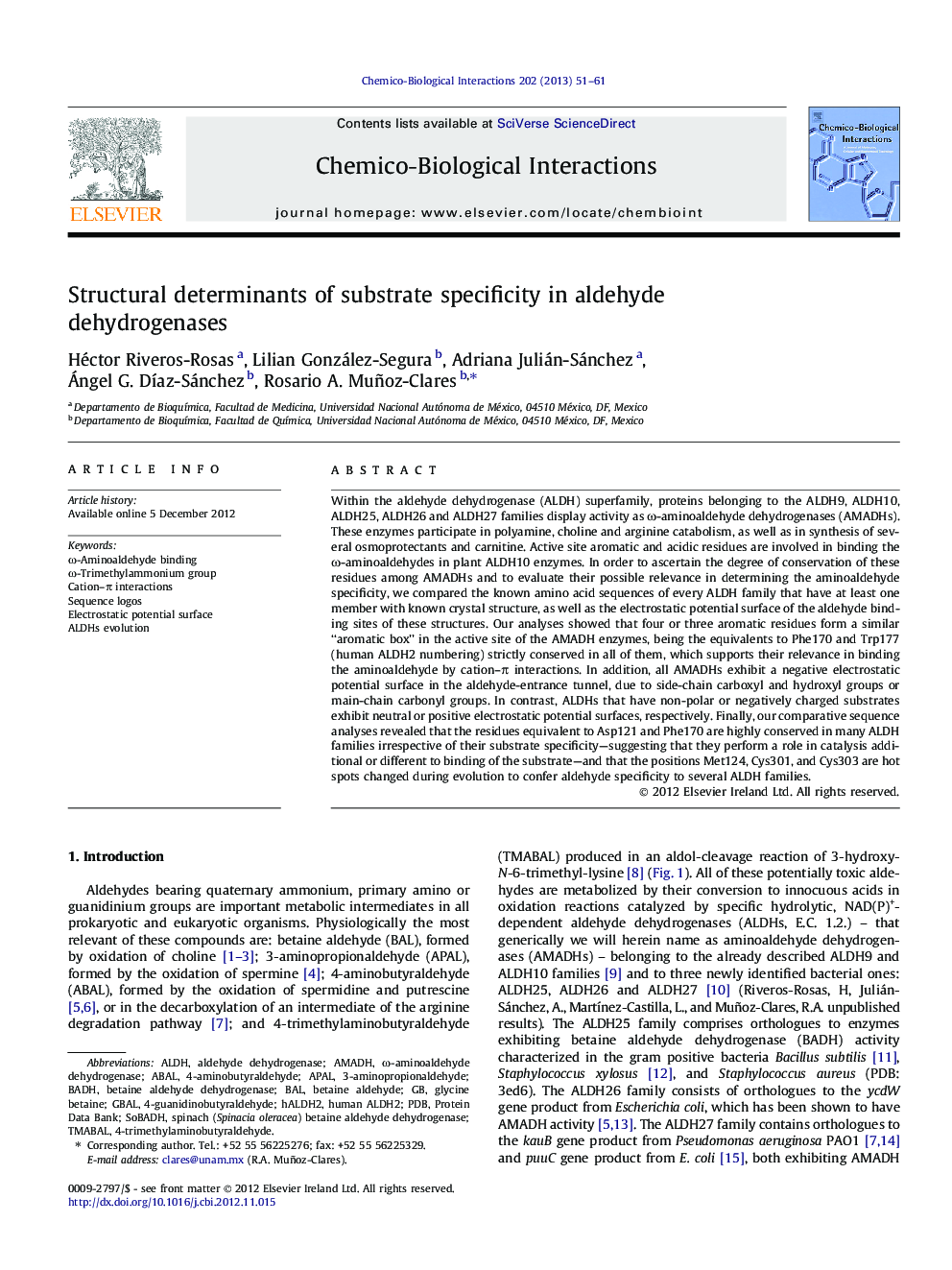| Article ID | Journal | Published Year | Pages | File Type |
|---|---|---|---|---|
| 2580639 | Chemico-Biological Interactions | 2013 | 11 Pages |
Within the aldehyde dehydrogenase (ALDH) superfamily, proteins belonging to the ALDH9, ALDH10, ALDH25, ALDH26 and ALDH27 families display activity as ω-aminoaldehyde dehydrogenases (AMADHs). These enzymes participate in polyamine, choline and arginine catabolism, as well as in synthesis of several osmoprotectants and carnitine. Active site aromatic and acidic residues are involved in binding the ω-aminoaldehydes in plant ALDH10 enzymes. In order to ascertain the degree of conservation of these residues among AMADHs and to evaluate their possible relevance in determining the aminoaldehyde specificity, we compared the known amino acid sequences of every ALDH family that have at least one member with known crystal structure, as well as the electrostatic potential surface of the aldehyde binding sites of these structures. Our analyses showed that four or three aromatic residues form a similar “aromatic box” in the active site of the AMADH enzymes, being the equivalents to Phe170 and Trp177 (human ALDH2 numbering) strictly conserved in all of them, which supports their relevance in binding the aminoaldehyde by cation–π interactions. In addition, all AMADHs exhibit a negative electrostatic potential surface in the aldehyde-entrance tunnel, due to side-chain carboxyl and hydroxyl groups or main-chain carbonyl groups. In contrast, ALDHs that have non-polar or negatively charged substrates exhibit neutral or positive electrostatic potential surfaces, respectively. Finally, our comparative sequence analyses revealed that the residues equivalent to Asp121 and Phe170 are highly conserved in many ALDH families irrespective of their substrate specificity—suggesting that they perform a role in catalysis additional or different to binding of the substrate—and that the positions Met124, Cys301, and Cys303 are hot spots changed during evolution to confer aldehyde specificity to several ALDH families.
► Structural and amino acid sequence comparisons of ALDH enzymes have been performed. ► Conserved aromatic residues form an “aromatic box” in AMADHs and other ALDHs. ► Electrostatic Potential Surface (EPS) of known ALDH crystal structures were estimated. ► EPS of the aldehyde tunnel guides substrates towards the active site of ALDHs. ► Three amino acid positions were often changed to confer aldehyde specificity to ALDHs.
